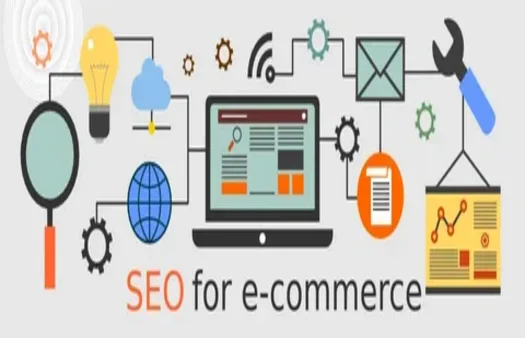How to Do Expert SEO of an E-commerce Site?
E-commerce websites are all about selling products online, but just having a great product isn’t enough. To stand out in the crowded online market, your e-commerce site needs to be visible to the right audience. This is where Search Engine Optimization (SEO) comes in. Expert SEO services for e-commerce sites can help you get more traffic, better rankings, and higher sales. In this blog, we’ll guide you through how to perform expert SEO on your e-commerce site to ensure it gets the visibility it deserves. Let’s dive in!
1. Understanding SEO for E-commerce Sites
SEO for e-commerce is the process of optimizing your online store to rank higher in search engine results pages (SERPs). Higher rankings lead to more visibility, more clicks, and more sales. It involves optimizing your product pages, category pages, and the entire site structure to make it more search-engine friendly.
2. Importance of SEO for E-commerce Sites
- Increased Visibility: The higher your site ranks, the more likely customers will find you.
- Higher Conversion Rates: Targeted traffic means users who visit your site are more likely to make a purchase.
- Better User Experience: Good SEO practices improve the overall user experience, making it easier for customers to find what they’re looking for.
- Cost-Effective Marketing: SEO is more affordable compared to paid ads and brings long-term benefits.
3. Key Components of Expert SEO for E-commerce
To make your e-commerce site a success, you need to focus on several key SEO components:
3.1. Keyword Research
- Identify Target Keywords: Use tools like Google Keyword Planner, Ahrefs, or SEMrush to find keywords relevant to your products. Focus on keywords with high search volume but low competition.
- Long-Tail Keywords: Use specific long-tail keywords like “best running shoes for women” rather than just “shoes.” These are less competitive and more likely to convert.
- Competitor Analysis: Look at what keywords your competitors are ranking for and target those that are relevant to your products.
3.2. On-Page SEO
- Optimize Product Pages: Include your target keywords in product titles, descriptions, and meta tags. Use high-quality images with alt text that includes keywords.
- Unique Content: Avoid duplicate content by writing unique product descriptions. This not only helps with SEO but also engages your audience better.
- Internal Linking: Link related products and categories to keep users on your site longer and help search engines understand your site structure.
3.3. Technical SEO
- Site Speed: A fast-loading site provides a better user experience and ranks higher. Use tools like Google PageSpeed Insights to test and improve your site speed.
- Mobile Optimization: Ensure your site is mobile-friendly since a large portion of online shopping is done on mobile devices.
- Clean URLs: Use clear, descriptive URLs that include keywords. Avoid long, confusing URLs with numbers and special characters.
- Secure Your Site: An HTTPS site is not only secure but also preferred by search engines.
3.4. Off-Page SEO
- Backlinks: Build high-quality backlinks from reputable sites. This can be achieved through guest blogging, influencer partnerships, or affiliate programs.
- Social Media: Promote your products on social media platforms to drive traffic and build brand authority. Social signals can indirectly influence your SEO.
- Customer Reviews: Encourage satisfied customers to leave positive reviews. Reviews can boost your credibility and also help with local SEO if you have physical stores.
3.5. Content Marketing
- Blogs and Articles: Create content that addresses your customers’ needs. This can include buying guides, product comparisons, or how-to articles.
- Video Content: Videos are engaging and can explain your products better than text. Consider adding video reviews or tutorials.
- FAQs: An FAQ section can address common customer questions and include relevant keywords, improving your chances of ranking for these queries.
3.6. Local SEO
- Google My Business: If you have a physical store, make sure it’s listed on Google My Business. Include all relevant information like address, phone number, and business hours.
- Local Keywords: Use local keywords in your content and meta tags to attract customers from specific locations.
- Local Listings: Ensure your business is listed in local directories and review sites.
3.7. User Experience and Site Navigation
- Easy Navigation: Make it easy for users to find products with clear menus and categories.
- Site Search: A functional and accurate search bar helps users find what they’re looking for quickly.
- Clear Call to Action (CTA): Use CTAs like “Buy Now,” “Add to Cart,” or “Shop Now” to guide customers through the buying process.
4. Measuring Your SEO Success
- Google Analytics: Use Google Analytics to track your site’s traffic, user behavior, and conversion rates.
- Search Console: Google Search Console helps you monitor your site’s performance in search results, including which keywords you’re ranking for.
- Regular Audits: Conduct regular SEO audits to identify and fix issues. Tools like Screaming Frog or Sitebulb can help with this.
5. Common SEO Mistakes to Avoid
- Ignoring Mobile Users: Make sure your site is fully optimized for mobile devices.
- Neglecting Site Speed: Slow-loading sites can lose customers and ranking positions.
- Overusing Keywords: Keyword stuffing can harm your rankings. Use keywords naturally in your content.
- Not Using Analytics: Without tracking your progress, you won’t know what’s working or what needs improvement.
6. Call to Action
Ready to boost your e-commerce sales with expert SEO services? At RealMarketing World, we specialize in SEO services for e-commerce sites that drive traffic and increase conversions. Our team of experts will work with you to create a tailored SEO strategy that fits your business needs.Contact us today at RealMarketing World and let us help you dominate the e-commerce market!









